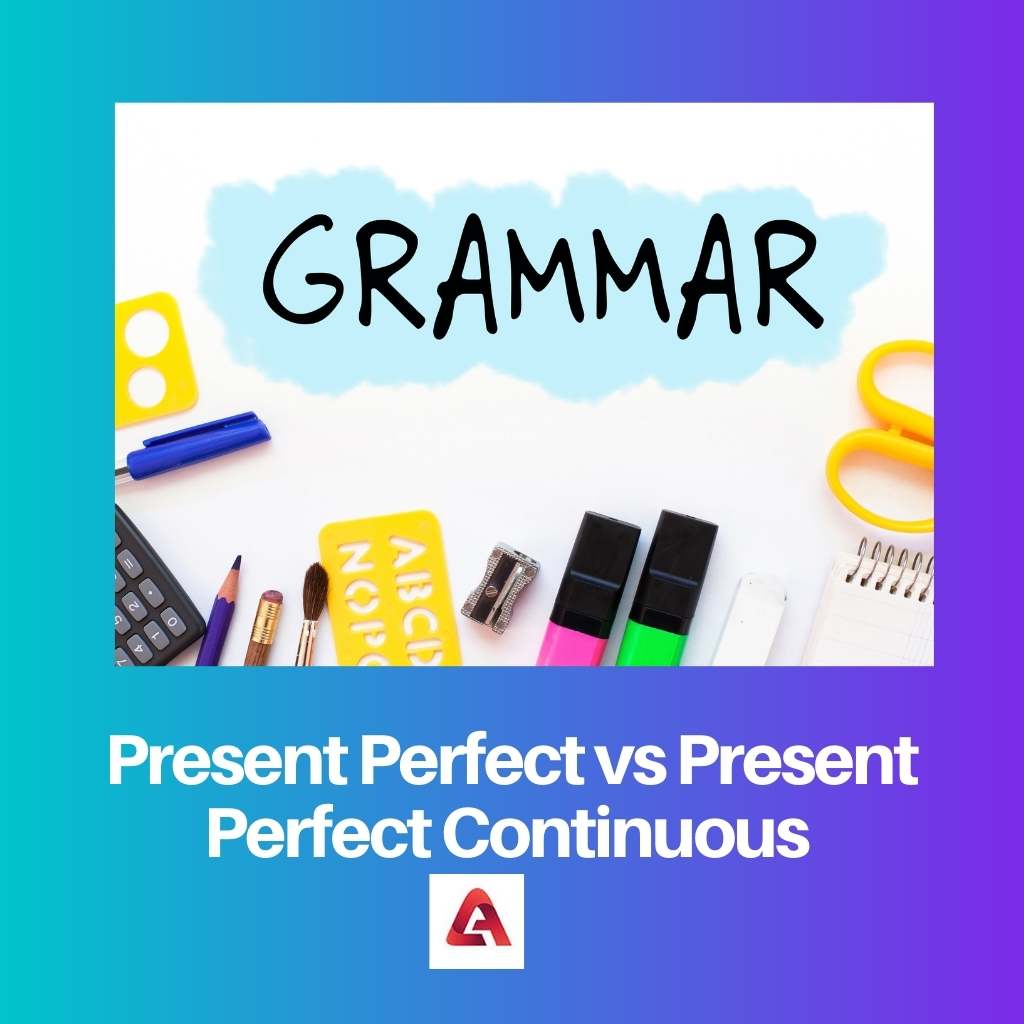Tenses are a very significant part of grammar. It denotes the time in which an action took place, and the action is going to happen or will happen shortly. Primarily there are three types of tenses.
The past tense, present tense, and future tense represent them. All three tenses are subdivided. For example, we have a simple past, a simple present, and a simple future.
Key Takeaways
- Present Perfect focuses on completed actions relevant to the present, while Present Perfect Continuous emphasizes ongoing actions with duration.
- Present Perfect uses the auxiliary verb “have” or “has” with the past participle, while Present Perfect Continuous uses “have been” or “has been” with the present participle.
- Present Perfect is used for actions with an unspecified time, while Present Perfect Continuous is used for actions with a specified duration.
Present Perfect vs Present Perfect Continuous
In English grammar, present perfect tense refers to the actions that have been completed in the past. It is used for those actions that last for a short duration. Present perfect continuous tense refers to those actions that have started in the past and is ongoing. It is used for those actions that last for a long time.

Present perfect refers to those actions that are entirely done in the past. It follows the pattern of having or has + been while writing the sentences. It is also used for someone who has gone somewhere to another place and then returned.
Present perfect continuous shows the amount of time that action takes to complete itself. For example, work started in the past but is continuing till now.
It can be for 2 minutes, 5 weeks, for a month, since Thursday, yesterday, etc. Anything like that can be used.
Comparison Table
| Parameters of Comparison | Present Perfect | Present Perfect Continuous |
|---|---|---|
| Time of action | Completed in the past (finished) or not done (unfinished). | No idea whether the action is finished or not. |
| Duration | These are used for actions that are for a short duration. | Actions that take a longer time. |
| Connection | Use of both present and past and sometimes display a deep presence of present tense. | Yes, the connection started in the past and continues to go on. |
| Structure | Have + past participle | Have been + ing |
| Example | I have washed my hair. | I have been working as a lawyer for the past ten years. |
What is Present Perfect?
The present perfect tense is used to express any event that started in the past and is still ongoing. It is mentioned in the Present perfect tense. It is also used in describing those actions which have been completed in the past.
That is over here and can’t be seen in the present. The primary purpose of the Present perfect tense is to determine whether the work is still going on or has been finished.
The format is as follows.
To have /has before the past participle of the verb. It can be found in three forms. They are
- Positive:- subject+ (has/have)+v3 (third form of the verb)
Ex- I have done my work.
- Negative:- we add “not” here.
Has/have + not + v3
Ex:- I haven’t done my work.
3. Question:- Here, have come before the subject.
(Have/has +subject+v3)
Ex:- Have I done my work?
Sometimes contraction can also be used. That’s the shortening of Have to ‘ve. For example –
1. I have done my work, or I’ve done my work.
2. She has gone to Goa, or She’s gone to Goa.
The same goes with have not and have not.
I haven’t gone to Goa.
She hasn’t been doing her work properly.
Some examples are –
1. We haven’t received any offer letter.
2. Have you written in the given format?
3. I haven’t come to meet you.
4. I have never been to London.
5. She has been dancing for two hours.
What is Present Perfect Continuous?
Present perfect continuous is also known as present perfect progressive. It denotes the time for which work started in the past and continued till the present. It uses two auxiliary verbs with the main verb together.
Structure – sub+have/has+been÷present participle.
Here, the auxiliary verb (have/has) is circulated in the present simple tense.
The auxiliary verb in the next one is in past participle form. The last one of the main verbs comes in the present participle form, and in negative sentences, we see that not is used after the Second auxiliary verb.
The second auxiliary verb has or has. Those which are just before the subject or at the start of the sentence. Whereas in question sentences, the second auxiliary verb is written just before the subject or at the start of the sentence.
Examples are :
- It has not been raining. ( This is for a positive sentence.)
- Have you ever been to foreign countries in your life? ( This is for question sentences.)
- I have not been to London in my lifetime.
Sometimes the subject and the first auxiliary verb are contracted. For example:-
- You have been – you’ve been
- We have been – we’ve been
- Raj has been – Raj’s been
- It has been – It’s been
- He has been – He’s been
For negative sentences – The first auxiliary verb and not is contracted.
- I have not been playing here since 2007-I haven’t been playing here since 2007.
Main Differences Between Present Perfect and Present Perfect Continuous
- Present perfect says about an action that is already done, whereas Present perfect continuous shows those actions that are still going on or completed.
- The actions are permanent in the present perfect, whereas, in Present perfect continuous, we are unsure whether they are permanent.
- Present perfect gives weightage to the result from the action, while Present perfect continuous gives weightage solely to the result.
- Present perfect is not used with action verbs, whereas Present perfect continuous adds an -ing to them and uses them.
- Present perfect indicates how much or how many, whereas Present perfect continuous explains the time for which something happens.




